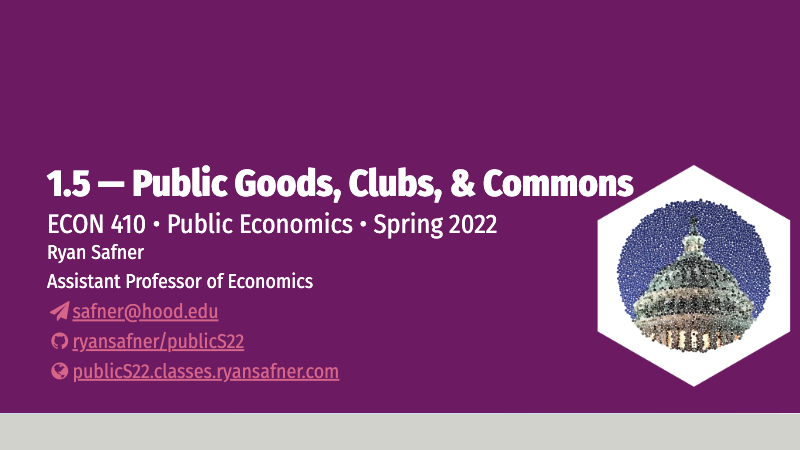Overview
Today we are going to consider different types of goods — public goods, club goods (or “toll” goods), and the commons (or “common pool resource”) — and the organizational challenges needed to successfully provide them. Each of these topics, and the research program behind each of them, deserves their own day, but we need to press ahead and it makes sense to lump these together.
A fundamental problem that will be relevant this entire semester, is the logic of collective action, first extensively explored by Mancur Olson in a 1965 book with that title (The Logic of Collective Action). I have given you a short chapter from a later book of his, The Rise and Decline of Nations that discusses some of the key ideas.
On the commons, it is difficult to find a good short introduction to the extensive research program by Elinor Ostrom (first woman to win an Economics Nobel prize) and her colleagues, so I recommend you watch or read her Nobel Prize address.
Readings
Required Reading
Optional/Referenced Reading
Public Goods and Collective Action
- Samuelson, 1954, “The Pure Theory of Public Expenditures”
- Safner, 2020, “‘Public Good,’ or ‘Good for the Public?’ Political Entrepreneurship and the Public Funding of Scientific Research”
- Iannaconne, 1992, “Sacrifice and Stigma: Reducing Free-riding in Cults, Communes, and Other Collectives”
- Econtalk: Iannaconne on the Economics of Religion
Commons
Questions to Guide Your Reading
What are the similarities/differences between individual interests and group interests (for groups to which individuals belong)?
What does Olson say is Marx’s shortcoming of his approach to groups (economic classes)?
What are the economic differences between large groups and small groups, in terms of individual incentives?
Why might groups fail to achieve their stated goals?
What are “selective incentives,” why are they important, and what may be some examples?
Connect Olson’s idea of selective incentives with Ostrom’s approach to understanding rules that best govern common pool resources.
Slides
Below, you can find the slides in two formats. Clicking the image will bring you to the html version of the slides in a new tab. Note while in going through the slides, you can type h to see a special list of viewing options, and type o for an outline view of all the slides.
The lower button will allow you to download a PDF version of the slides. I suggest printing the slides beforehand and using them to take additional notes in class (not everything is in the slides)!
